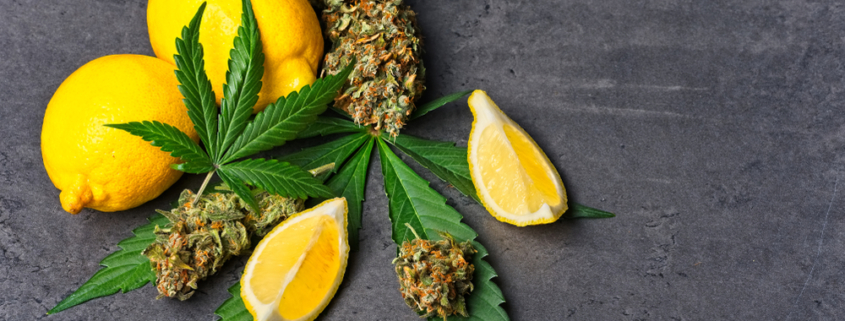The hemp plant is nothing short of miraculous. Not only can the stalks of certain hemp plants be made into biofuels and textiles, but hemp flowers also produce a number of medicinally beneficial compounds. Just as CBD has done in recent years, terpenes are now grabbing the attention of the industry.
Terpenes are the chemical compounds in hemp flowers responsible for giving them their unique aromas and flavors. Terpenes are found throughout the plant kingdom and have long been used as ingredients in essential oils.
Today, researchers have developed exciting new extraction technologies and methods specifically for terpene isolation. In doing so, they have opened the door for the production of terpenes to be used in products both inside and outside the hemp industry.
What are Terpenes?
Terpenes are the chemical compounds that give tree and plant species their unique smells. Whether it be the taste of basil or the smell of a pine tree, terpenes are literally the visceral connection between people and the plant world. Looking to hemp, unique terpene profiles are some of the most defining characteristics of different strains.
Hemp flowers produce terpenes in the same glands that produce cannabinoids like CBD. In studying hemp flowers, researchers have uncovered more than 100 of these molecules that can be characterized in three primary groups — monoterpenes, sesquiterpenes, and triterpenes. Beyond hemp, scientists speculate there could be upwards of 20,000 different terpenes found in the natural world.
The health and wellness industry has long since utilized terpenes for their therapeutic benefits. Of these, aromatherapy is a popular use of plant-based terpenes. Due to abundance in nature, scientists have found other uses for terpenes, including flavoring, biofuels, and medications.
Medicinal Uses of Terpenes
Terpenes have medicinal value on their own or when used in conjunction with cannabinoids like CBD and CBG.
Because so many different types of terpenes exist in nature, we are just beginning to scratch the surface of their potential medical applications. However, studies have shown terpenes to have positive effects in the following applications:
- Antibiotic
- Antioxidant
- Anti-inflammatory
- Neuroprotective
- Antitumor
While terpenes have amazing medical benefits on their own, they also work in unison with CBD to provide additional relief.
When researching the effects of THC on subjects, scientists uncovered the fact that “[t]ogether with the cannabinoids, terpenes illustrate synergic and/or entourage effect.” According to this line of thought, as terpenes and cannabinoids work together in the human body, they alter one another’s effects. As such, many people believe terpenes enhance the medicinal effects of CBD when consumed.
What is Terpene Isolation?
Terpene isolation is the process of removing terpenes from hemp flowers. After the terpenes are extracted, they can then be used in other products. While the industry already has a number of established extraction methods for CBD and CBG, we are just learning how to isolate terpenes from hemp.
Terpenes are quite chemically unstable when compared to other compounds found in the hemp flower – especially compared to cannabinoids. As such, popular CBD isolation methods like hydrocarbon extraction damage sensitive terpenes during processing.
While hemp terpene isolation methods and technologies are still far behind CBD manufacturing, there have been some interesting advancements in the last few years. Common types of hemp terpene isolation methods include hydrodistillation, steam distillation, and supercritical CO2 extraction.
Terpene Isolation Technology
Hemp terpene isolation technology borrows heavily from the essential oils industry. While terpenes have gained major notoriety in recent years in the hemp industry, health and wellness companies have extracted terpenes for products like essential oils for decades.
Today’s terpene isolation technology is a blend between modern cannabinoid extraction equipment and traditional essential oil manufacturing.
Hydrodistillation & Steam Distillation
Hydrodistillation and steam distillation are similar processes that each work well for isolating terpenes. Please note, hydrodistillation is a precursor to steam distillation – which is now the more common method for making terpene isolate.
In their book Essential Oil Safety, Robert Tisserand and Rodney Young explain, “During steam distillation, volatile plant constituents are vaporized and then condensed on cooling to produce an immiscible mixture of an oil phase and an aqueous phase. The oil product is a complex mixture of mainly odoriferous, sometimes colored and frequently biologically active compounds.” By running steam through hemp flowers, then distilling the vapor, manufacturers are able to capture delicate terpenes without damaging them.
Supercritical CO2 Extraction
Supercritical CO2 extraction is one of the few cannabinoid extraction methods that is also a good terpene isolator. Because the CO2 extraction process doesn’t use harsh solvents like butane and propane, many consider it to be a cleaner, superior production method for terpene isolate.
CO2 extraction preserves delicate terpenes because it can operate at extremely cold temperatures. Importantly, supercritical CO2 extractors are complex machines that allow hemp manufacturers to “run” biomass in several phases. Therefore, it is possible to run an extremely cold batch first to extract terpenes, followed by a slightly warmer batch to isolate cannabinoids.
Terpene Isolation and the Future of the Hemp Industry
With the advent of legal hemp in the United States, scientists have put serious time into developing new ways to process cannabinoids. In learning about CBD extraction, researchers have also uncovered exciting new methods for isolating terpenes.
Hemp flowers are renowned for their incredible terpene profiles. Many people cannot believe a single plant can produce such rich and diverse aromas – including citrus, fruit, pine, and many more. While hemp connoisseurs have long appreciated terpene profiles, there is potential to share these amazing compounds outside the hemp industry.
As manufacturers continue to refine terpene isolation methods, other people are considering what we can use these compounds for. Excitingly, there is talk of hemp companies partnering with businesses outside the industry for the purpose of manufacturing and using terpenes. To illustrate, hemp terpenes could be used as a flavoring in the food industry, or as a natural additive to health and wellness products.
Even within the hemp industry, terpenes are offering some incredible promise. As CBD concentrates often lose much of their aesthetic appeal during extraction, there is potential to remix them with terpenes after processing. Not only will this approach help CBD oils smell and taste better, but they will also retain the added medical benefits of terpenes.
Just as CBD farms have sprung up around the nation, we could very well see a future shift where farmers start growing hemp specifically for terpene production. If this process takes place, terpenes will become a valuable new commodity for hemp farmers — ideally providing more stability in a sometimes volatile market.
Talk Terpenes with High Grade Hemp Seed
By breeding some of the best CBD strains in the hemp industry, the team at High Grade Hemp Seed has grown extremely familiar with terpenes. We are thrilled to see this new shift in the hemp industry. Feel free to contact us at any time with questions.



